How to Know If Your Cat Is Sad
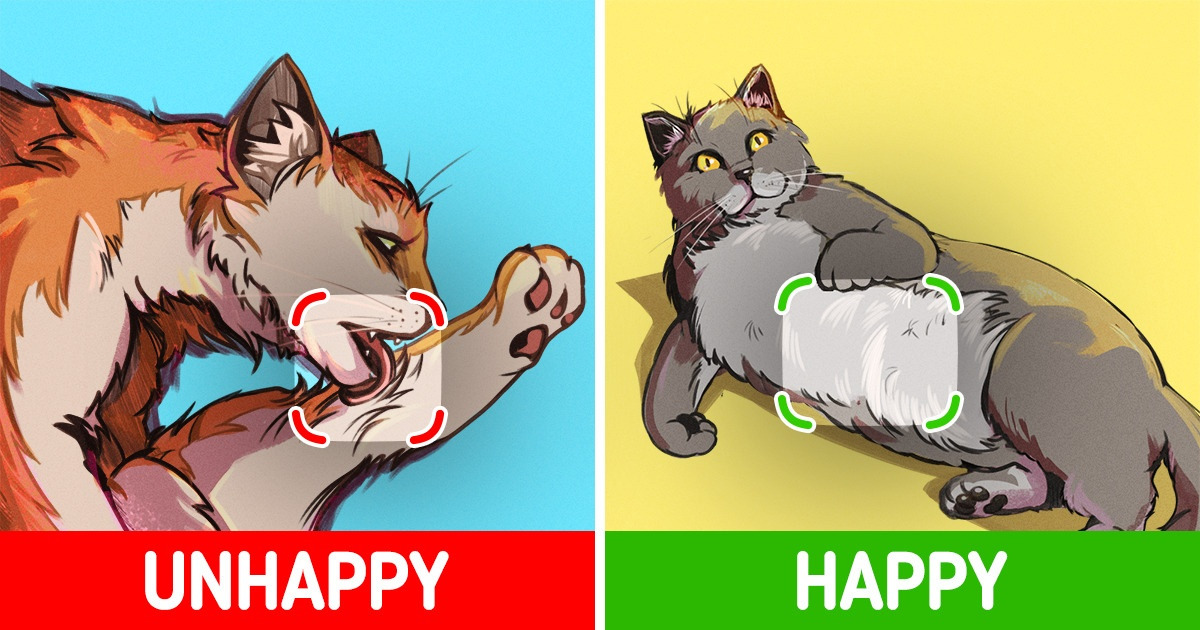
Cats are emotional animals and, just like humans, they can get sad or depressed at times. Even though some signs of discomfort can be easy to notice, others may not be so obvious, making it difficult to know whether your pet is feeling down or not.
5-Minute Crafts has created this guide with certain behavioral aspects to pay attention to if you suspect that your feline friend is unhappy. However, we remind you that this article has been created for informative purposes only and does not replace medical advice.
1. Hiding
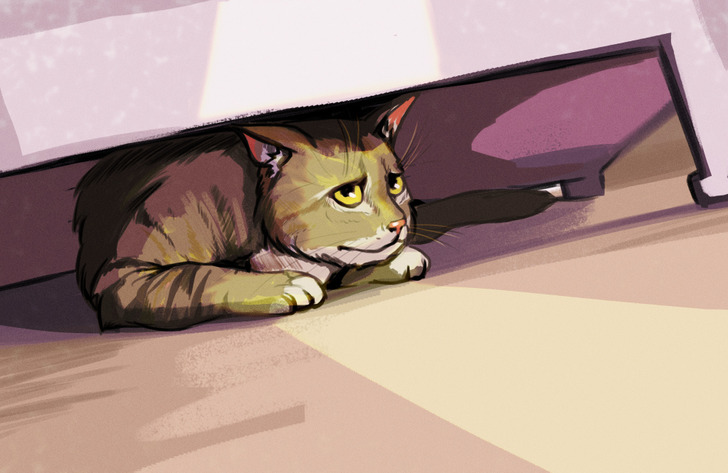
It’s common for cats to find a comfortable place to hide from time to time. However, if your 4-legged friend is more reclusive than normal, it may be possible that they’re not feeling their best.
Unhappy cats are usually more fearful, so they may look for a spot where they can comfort themselves and feel protected. Moreover, hiding can also mean that your cat is not interested in daily activities, such as playing and cuddling up with family members.
2. Poor or excessive grooming
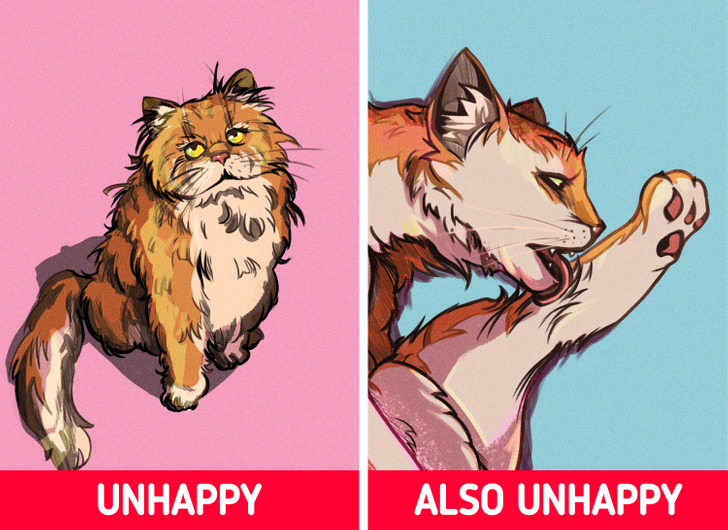
Grooming is an important part of a cat’s routine, and this habit can change substantially if your feline is depressed. For instance, they can either increase or decrease their grooming, or even stop doing it completely.
Therefore, if you’ve noticed any differences in your cat’s grooming habits, such as unkempt coats or excessively groomed patches, it’s very possible that your cat is feeling down.
3. Vocalization

Even though low-pitched yowling can be a clear sign that your cat is unhappy, you should also pay attention to purring, as it can be an indicator that your pet is trying to soothe themselves.
Moreover, changes in your cat’s usual vocalization can also show that something isn’t right. For example, your normally loud kitty could become quiet, or your calm cat could become noisy.
4. Aggression
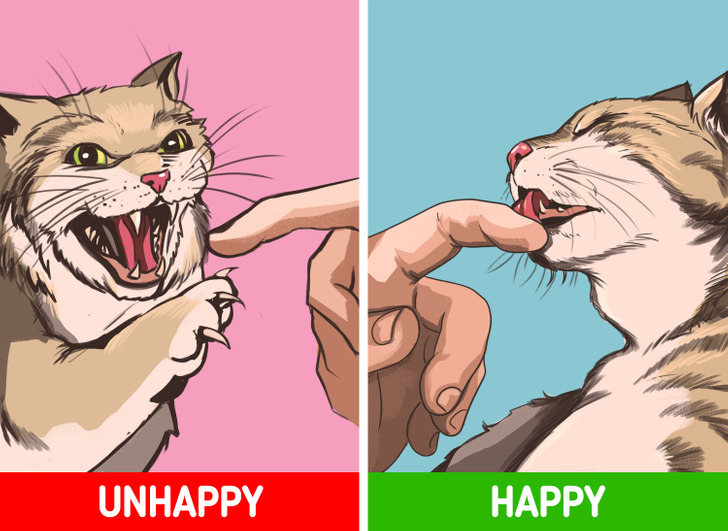
Besides being a way to respond to threats, aggression can communicate different aspects of your cat, including their mood. An unhappy cat may tend to perceive things as a threat, even if they’re not.
As a consequence, sad cats can become more hostile and avoid interaction, even after being given space. If you notice aggressive behavior, such as hissing, growling, biting, and chasing, it’s advisable to visit your veterinarian.
5. Sleeping patterns
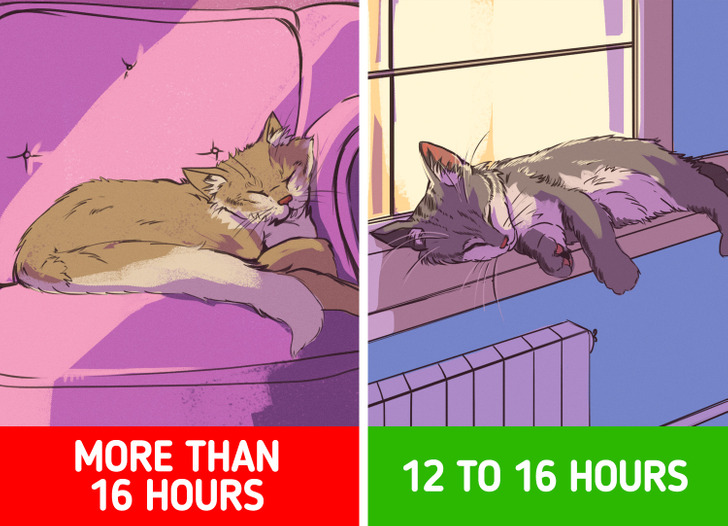
Sleeping a lot is a normal thing in a cat’s routine, having an average of 12 to 16 sleeping hours per day. So watching them take long naps isn’t something to be worried about. However, if you’ve noticed that they’re sleeping much more than normal, your cat may be unhappy.
At the same time, your pet could be sleeping much less or change their sleeping location, which can also mean there’s something wrong with them.
6. Body language
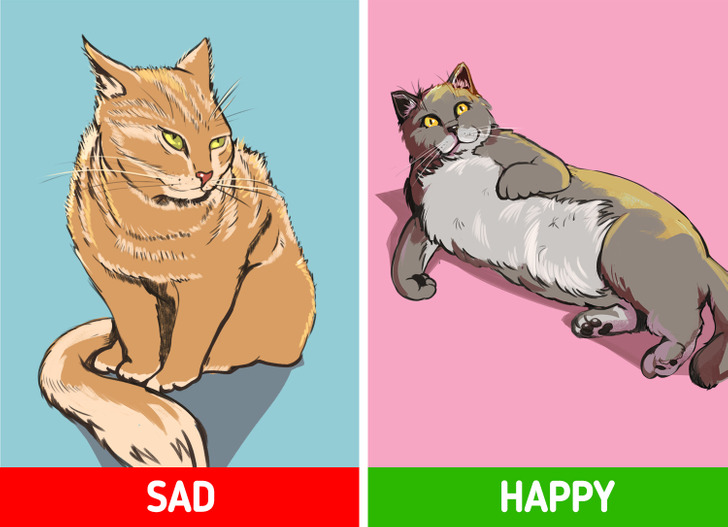
Your cat can communicate different things through their body language, and unhappiness is no exception. For instance, if you see that your cat’s ears are usually held back, their fur is bristly, or their tail is tucked between their legs, it’s likely that they’re not feeling well.
💡 In this case, it may be useful to keep in mind that signs of normal cat behavior can include holding their tail high, lying on their side with a visible tummy, and pointing their ears upward, facing forward.
7. Eating habits
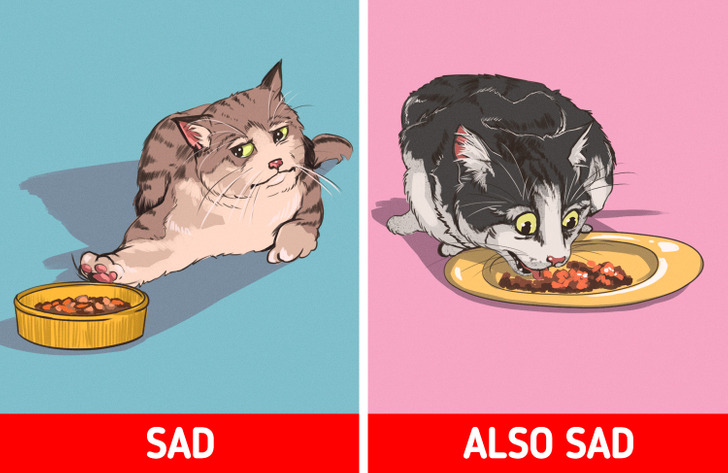
Just like with humans, depressed cats may show a decreased interest in food, even when offered their favorite meals. At the same time, your cat might also start eating more as a way to comfort themselves.
Either way, pay attention to your cat’s eating habits. If you spot any changes in their appetite, there may be something wrong with the way they feel.
How to make your cat feel happy again
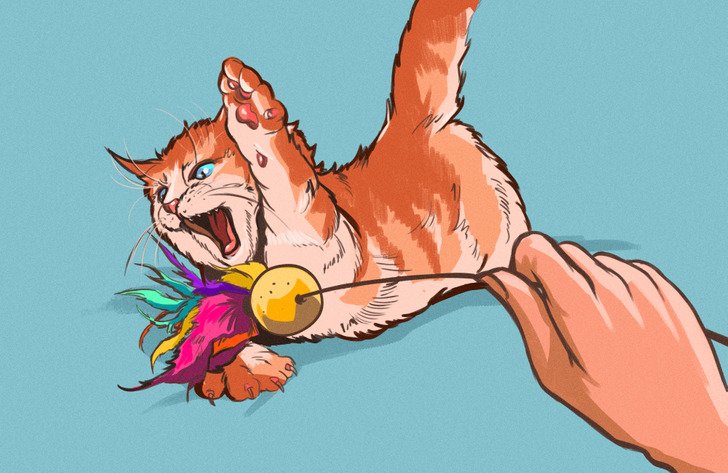
- Visit a vet if your cat is showing signs of stress, illness, or depression. A professional can recommend the appropriate medical treatment or necessary changes in your pet’s routine.
- Play with your pet, as this can relieve your cat’s aggression. Here you can also try introducing new games and toys of different colors, sizes, and textures.
- Pet your feline friend, especially behind their jaw and on the back of their head.
- Try soothing your cat with calming music. Look for playlists designed exclusively for cats on YouTube or other platforms. They may enjoy hearing these tracks.
- Introduce new meals. Some cats may respond well to different flavors. Ask your vet regarding the type of food you may give your cat, as well as the appropriate amounts.